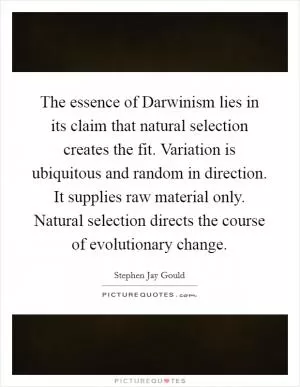Transitional forms are generally lacking at the species level, but they are abundant between larger groups

Transitional forms are generally lacking at the species level, but they are abundant between larger groups
Stephen Jay Gould, a prominent paleontologist and evolutionary biologist, was a strong advocate for the theory of punctuated equilibrium, which suggests that evolution occurs in rapid bursts of change followed by long periods of stability. This theory helps to explain why transitional forms are generally lacking at the species level, but are abundant between larger groups.Gould argued that the fossil record is incomplete and biased, making it difficult to find transitional forms at the species level. Fossilization is a rare and selective process, with only a small fraction of organisms becoming preserved as fossils. This means that the chances of finding a complete series of transitional forms between two closely related species are slim. Additionally, the process of speciation, where one species splits into two distinct species, can happen relatively quickly in geological terms, further reducing the likelihood of finding transitional forms at the species level.
However, when we look at the broader picture and consider transitions between larger groups, such as between fish and amphibians or reptiles and birds, we see a wealth of transitional forms in the fossil record. These transitional forms provide strong evidence for the gradual evolution of major groups of organisms over millions of years. For example, the discovery of Tiktaalik, a fish-like creature with characteristics of both fish and tetrapods, has been hailed as a key transitional form in the evolution of vertebrates from water to land.
Gould's work highlights the importance of looking at the big picture when studying evolution. While transitional forms may be lacking at the species level, they are abundant between larger groups, providing valuable insights into the history of life on Earth. By studying these transitional forms, we can gain a better understanding of how complex organisms have evolved over time and appreciate the diversity of life that exists today.












 Friendship Quotes
Friendship Quotes Love Quotes
Love Quotes Life Quotes
Life Quotes Funny Quotes
Funny Quotes Motivational Quotes
Motivational Quotes Inspirational Quotes
Inspirational Quotes